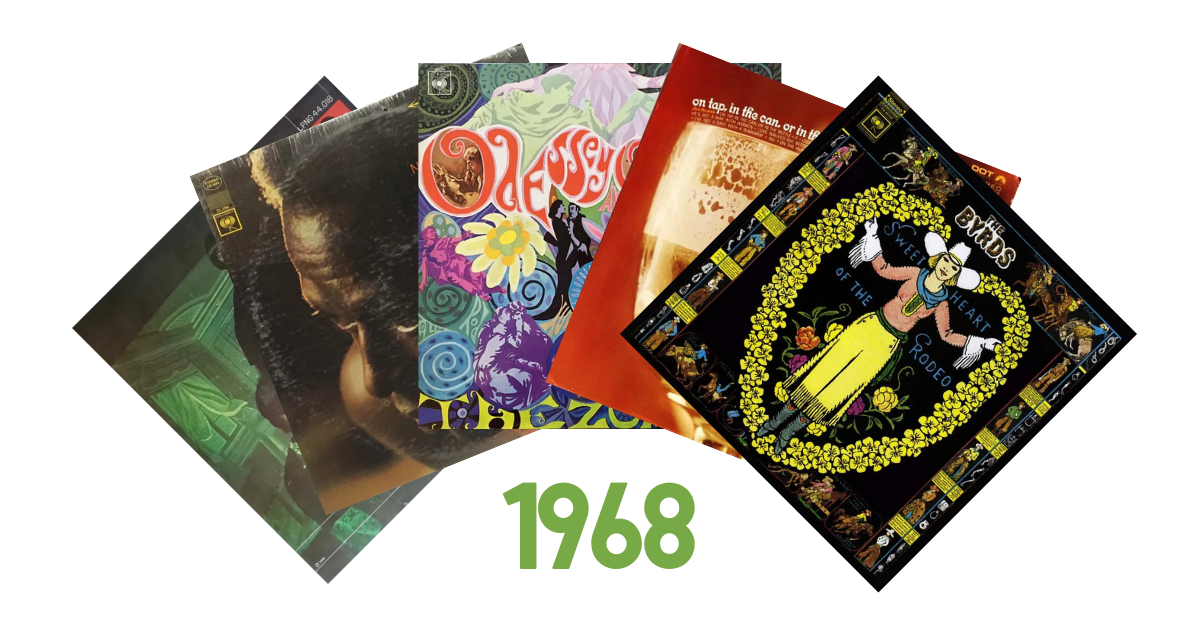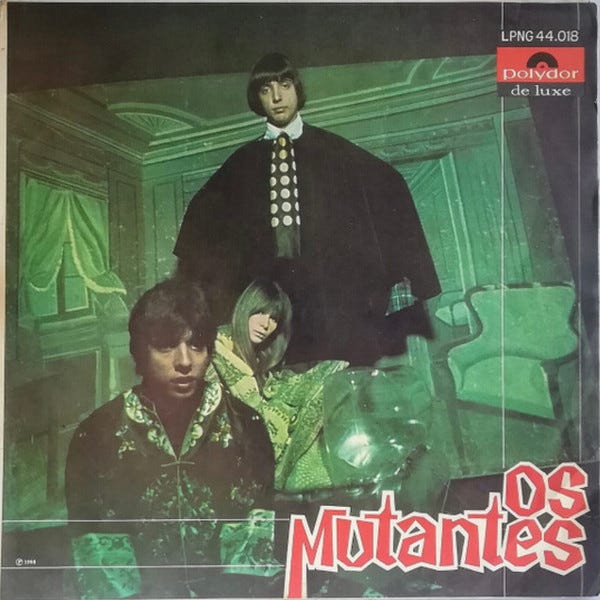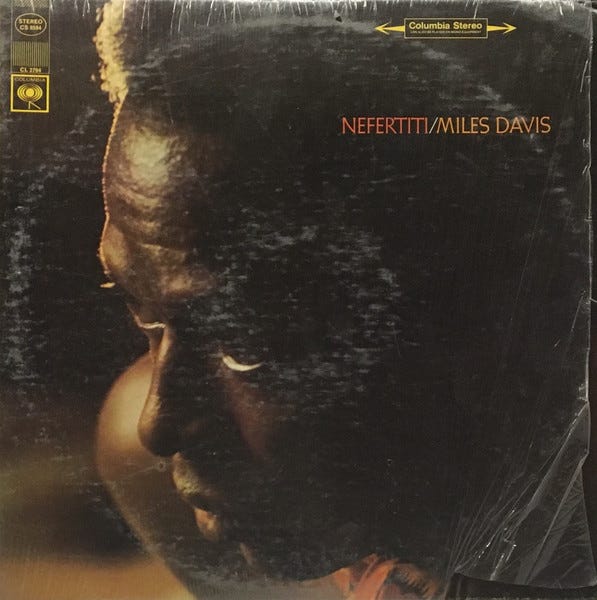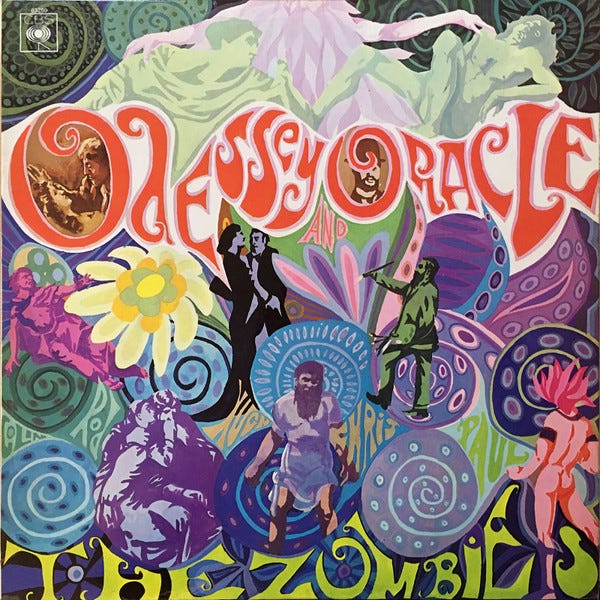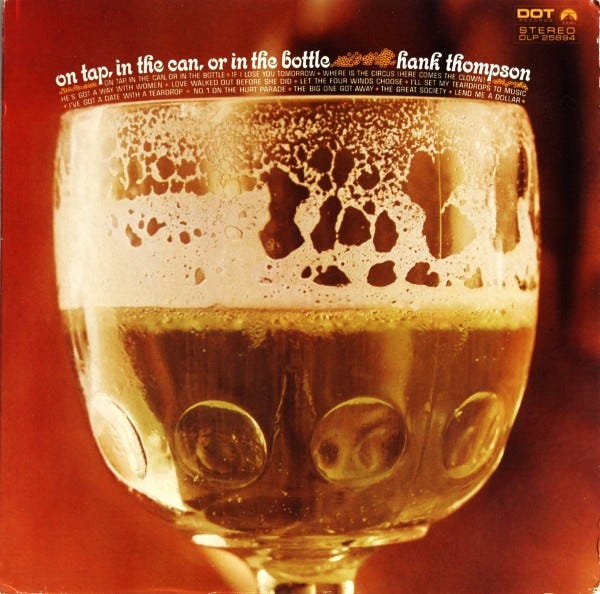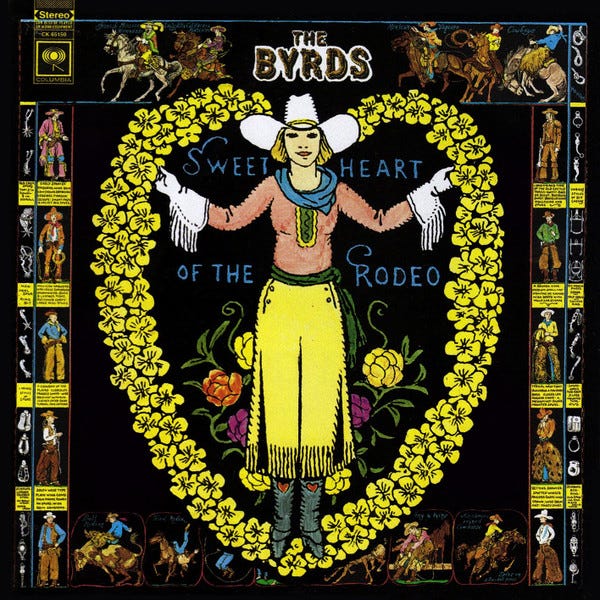Record Collecting: 1968 (Os Mutantes thru Sweetheart of the Rodeo)
Os Mutantes, Miles Davis, The Zombies, Hank Thompson, and The Byrds
Welcome to my series on record collecting, where we select 30 albums to target for each year between 1960 and 2020. You can find the manifesto here, including links to other entries. In short, as I map my own thinking on how to invest in building a record collection, I hope it will be a useful guide in thinking about yours. The goal is a personal collection that doubles as a modern art musical library with, you know, killer tunes. Apologize in advance for the massive gaps in my musical knowledge. That’s what the comment section is for.
The year is 1968. Sgt. Pepper is the first rock record to win the Grammy’s Album of the Year award, “Hey Jude” dominates the charts, and Apple Corps. launches. The Tropicália movement introduces a slew of revolutionary new artists in Brazil. José Feliciano performs a soul version of the U.S. national anthem at the World Series, causing outrage. TCB, the first musical special of the rock era to air on American broadcast television, features an exclusively Black cast. Johnny Cash marries June Carter and records at Folsom State Prison. The Fillmore East opens. The Monkees TV show concludes. Hair debuts on Broadway. David Ruffin is fired from The Temptations. Frankie Lymon overdoses on heroin and Wes Montgomery dies of a heart attack. David Gilmour joins Pink Floyd, replacing Syd Barrett, who checks himself into a psychiatric hospital.
See all of the 1960s selections
See all selections listed by artist
1968
Part 5
Listed alphabetically by album title
Os Mutantes - Os Mutantes (Polydor)
Tropicália
Brazil radicalizes pop-rock. Psychedelia is not new at this point; it has already pushed rock and pop in all sorts of colorful directions. But filtering otherwise pleasantly bopping sounds through a South American prism of revolutionary spirit, Carnival delight, Brazilian pop, yé-yé softness, R&B backbeats, fuzztone overmodulation, and… I don’t know, like Stockhausen or something… certainly is worth taking serious note of. The teenage trio of the Dias Baptista brothers and Rita Lee are members of the rambunctious Tropicália movement. Their debut, released even before the manifesto compilation Tropicália ou Panis et Circencis, demonstrates just how conservative psychedelic popsters north of the equator are pursuing the craft. Enthusiastic riffs explode like fireworks and disappear just as quickly. The trio shout in metaphor while Rogério Duprat’s arrangements barely keep from collapsing completely on themselves. Whatever “Tempo no Tempo” is. It’s all youthful energy and a desire to tear down the system, both politically and sonically. Radicalism in the hands of precocious artists is always a recipe for fun. Poor ol’ plain pop-rock will never be the same.
It is almost if the trio is still preparing to pose for the album jacket photo shoot when they snap the picture. You can certainly see how the visual is just as important to their psychedelic spirit as the audio. Amazing costuming and kudos to the designer on the lettering. Great accompaniment to the record.
Miles Davis - Nefertiti (Columbia)
post-bop jazz
The end of acoustic Davis. His second great quintet—Wayne Shorter, Herbie Hancock, Tony Williams, Ron Carter—is rounding to a close and getting compositionally playful… or, I suppose I should say, compositionally more playful. None of these players are ever lacking new ideas. Shorter’s title track flips traditional roles, with the horns repeating patterns while the rhythm section explores the space. Hancock’s “Madness” and Williams’s “Hand Jive” evoke an anxious energy that contrasts Davis’s sure-toned melodic searching. Throughout, narratives never quite arrive; instead, the band creates shifting soundscapes, holding your attention in the way they can keep together despite the complicated, ever-moving pieces. Think an intricate puzzle box that sits perfectly when still but collapses into shambles whenever you accidentally nudge the table. It is not all intellectual though; catch Nefertiti on the right night, and you’ll get pleasantly wrapped up in its moods: sandalwood, scotch, wool, tobacco, dark chocolate.
The album cover is a bit of a phone-in from Columbia. Davis is the leader here, but his band is doing a lot of the work. It does evoke an appropriate atmosphere, but feels a little undercooked.
The Zombies - Odessey and Oracle (Date)
psychedelic pop-rock
They give up before it is even released. Rod Argent and Colin Blunstone call it quits at the end of 1967, having had a little success during the decade but far less than they hoped. Earlier in the year though, they produce one last flail of a record for UK CBS. Their budget is so small they use John Lennon’s Mellotron instead of session musicians and pay for the stereo mix themselves. As it often happens, limitations lead to the most inspired creations. Argent and Blunstone craft a minor miracle of psychedelia, buoyant and bright, laced with earworming vocal melodies and a well-balanced mix of the Baroque and the soulful. Argent’s arrangements light up as they snap together and Blunstone’s vocals are wistful and masterfully delivered. From the opener’s gush of kaleidoscopic pop to the sunglasses-sporting, ice-blue groove of closer “Time of the Season,” Odessey is an all-in, mini-masterpiece of pop-rock songcraft. Amazing how it would take years for people to hear it for what it is.
Look, spelling is hard even in the day of autocorrect-everything, nonetheless 60 years ago. No one bats 1.000. Let’s all just pretend the title’s misspelling on the album cover is intentional, like the band initially does, because the rest of the jacket is downright gorgeous.
Hank Thompson - On Tap, in the Can, or in the Bottle (Dot)
honky tonk country
Country and beer, what could be better? Thompson and the Brazo Valley Boys are perhaps on the downswing of their classic honky tonk Western swing popularity, but 15 years of touring and producing records together makes the group a belt buckle-tight songwriting outfit. They turn their skills to the trials and tribulations of hops-flavored relationships. With Merle Travis doodling on lead guitar, bright barroom piano, touches of surprisingly angelic background singers, and Thompson’s warm twang of a vocal, the music sways with the room as the keg starts to dwindle and the one-liners hit hard: “He’s got a way with women / And he just got away with mine.” “I could drink to the times when I was happy / But here's a toast to my misery.” “I'll win awards for staying up on top the charts / For being the most broken of broken hearts.” And there are plenty more where those came from: the bottom of this country classic bottle.
I start salivating every time I pick up the LP. Dot Records could’ve been lazy with the jacket design by just using the photo, but the suds between the great typeface are an inspired choice.
The Byrds - Sweetheart of the Rodeo (Columbia)
country-rock
The California rock innovators aim to popularize country for the hipsters. It certainly doesn’t work at first. When the psychedelic version of The Byrds falls apart, Roger McGuinn and Chris Hillman bring on the young country-rock pioneer Gram Parsons. Together, they—with penchant ego clashes—put together a record of country classics, chicken-fried renditions of rock-friendly tunes, and a pair of Parsons originals, each enhanced by the band’s warm harmonizations and talent for projecting earnestness. In its moment, it is too hippie for Nashville and too country for the counterculture. But the smart song selections and bittersweet vibe burrow into any that listen. As country-rock finds its audience, Sweetheart becomes an essential statement in the evolution of the genre. Decades later, this will be the prime blueprint for the hybridization-is-hip, alt-country sound.
Fantastic jacket and so fitting for the record’s essence. Nostalgic and keen and precious. Evokes The Bronco Buster and digging the rituals of rural life. Just like interlopers on the culture might do.


